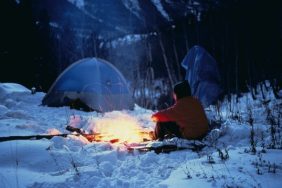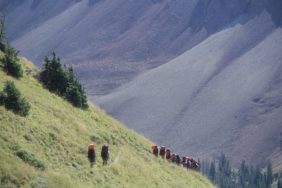 Few hunters will ever go on a do-it-yourself backpack hunt. Taking everything you need to survive and to hunt is not for the light-hearted, but it can be one of the most rewarding experiences of a hunter’s life. Not only is it the ultimate way to express your rugged individualism, but the satisfaction of working hard for a trophy is the ultimate in man vs. nature accomplishments.
Few hunters will ever go on a do-it-yourself backpack hunt. Taking everything you need to survive and to hunt is not for the light-hearted, but it can be one of the most rewarding experiences of a hunter’s life. Not only is it the ultimate way to express your rugged individualism, but the satisfaction of working hard for a trophy is the ultimate in man vs. nature accomplishments.
Anyone who does any research on back pack hunting will run across a common theme of ‘lighter is better.’ No truer words have ever been spoken. Going light has never been easier with today’s modern materials and food products. Here are two items that will lighten your pack and not lighten your wallet.
Sleeping bags are a must-have item. Depending on when you plan your hunt, most trips are done in moderate to cool temperatures, and this means that you have more than a few choices when it comes to quality bags. The lightest bags are down bags rated for temps of twenty degrees and up. Some of these well-made bags can weigh slightly less than two pounds, and a good quality bag can be found at a reasonable price.
That is considered super-light. When temps are going to be slightly less than a bag’s rating, packers in the know choose to take either a light-weight sleeping bag liner or an over bag called a bivy sack. A liner is self-explanatory, but a bivy sack is a large bag that you put your sleeping bag into. Most of these are light enough to offset the extra weight of a higher rated sleeping bag. The bivy and the liner are two ways to stay warmer while saving important ounces.
Down bags are proven performers, however they are almost worthless when wet so if you are heading to a rainy climate, think about synthetic bags. A good synthetic bag will keep you warm even if it does get wet. However, these bags do weigh a little more than down bags. There are a couple of companies such as Wiggy’s who make a super light-weight synthetic that is rated at twenty degrees.
Another way to shave pounds is to pack de-hydrated or freeze-dried foods. In the 1990’s, there were only one or two companies making these meals which were designed for back packers, but now there are many companies producing them. Search the internet, watch product reviews on Youtube.com, and try to get some samples to try. A good rule of thumb is to pack at least one pound of dried food per person, per day. Most of these specialty meals provide 3000-4000 calories and require little water to rehydrate them.








